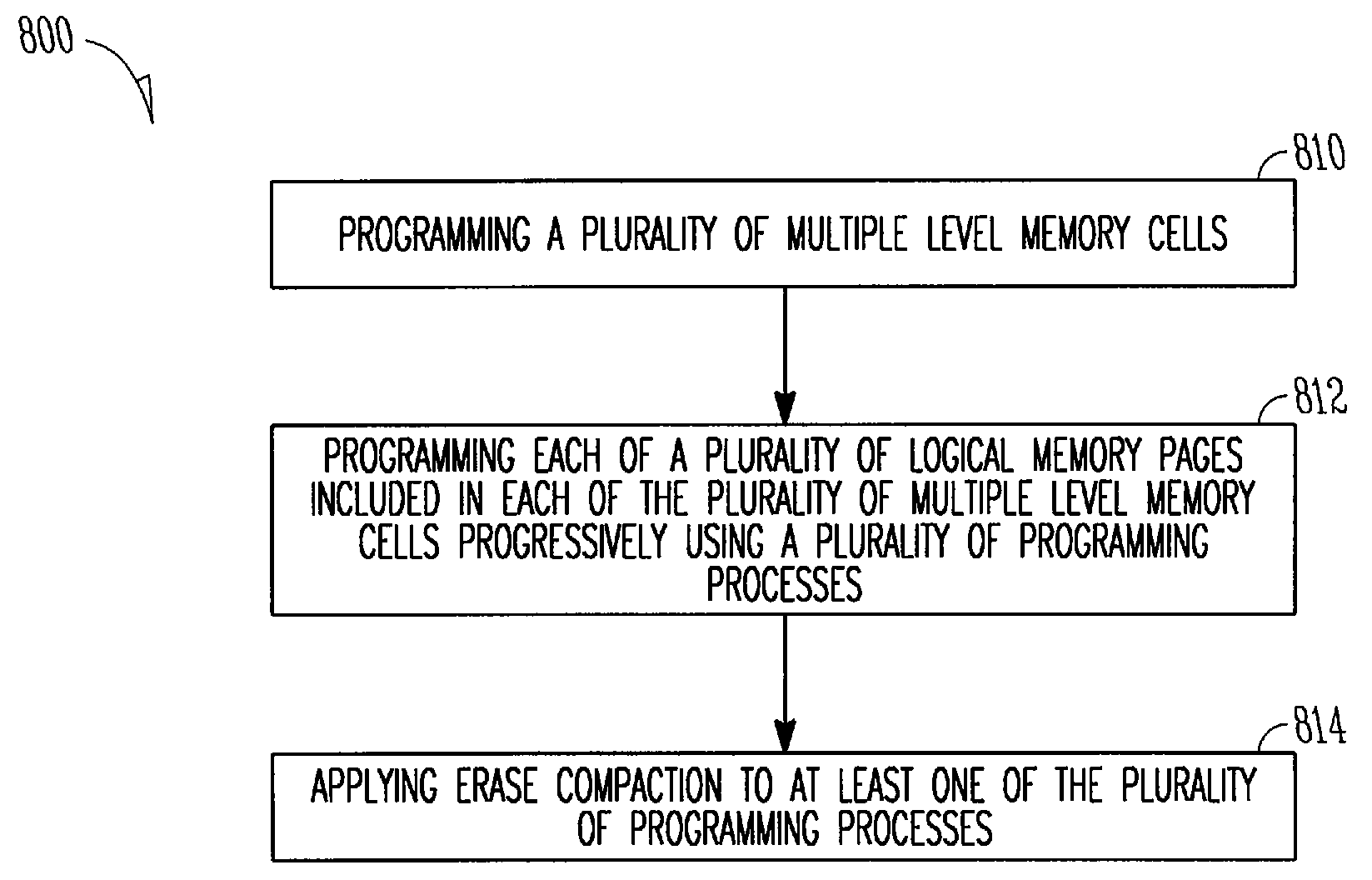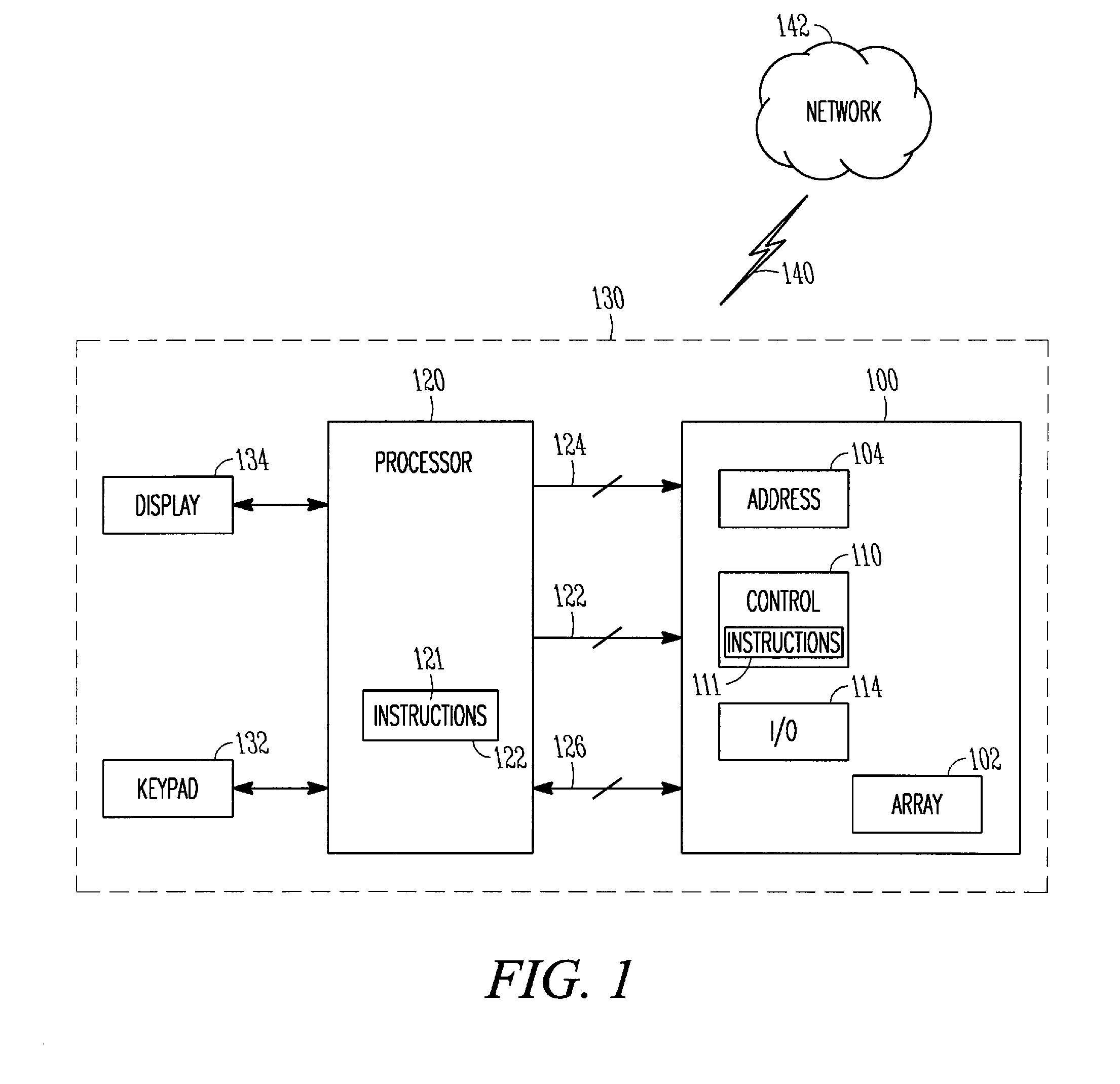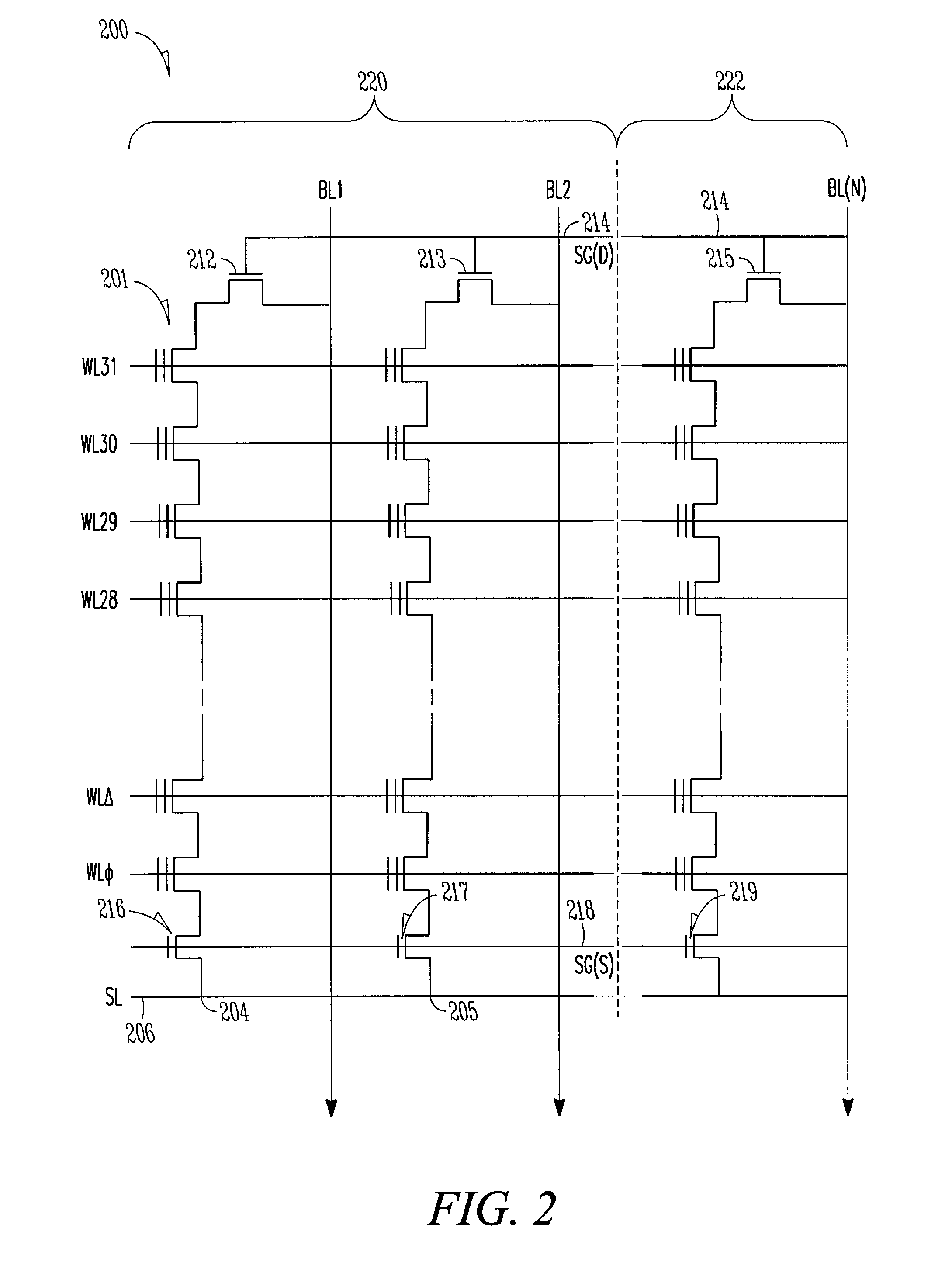Apparatus, method, and system for flash memory
a technology of flash memory and apparatus, applied in the field of memory devices, can solve the problems of data corruption or loss, one or more threshold voltage states may be difficult to program properly than other states, and the memory cells will not properly represent the data intended to be stored into the memory cells
- Summary
- Abstract
- Description
- Claims
- Application Information
AI Technical Summary
Benefits of technology
Problems solved by technology
Method used
Image
Examples
Embodiment Construction
[0012]In a multiple level NAND flash memory cell, tight threshold voltage distribution is important. Tight control over programming refers to the ability to program threshold voltages in a multiple level memory cell within any one of designated ranges of threshold voltages so that the programmed threshold voltage properly represents the data intended to be stored in the multiple level memory cell.
[0013]For example, in a 4-bit per cell memory device wherein 4 bits of data may be stored in a single memory cell, 16 states are needed. Each state is generally represented by a defined range of threshold voltages that may be programmed into a multiple level memory cell in order to represent a particular state. If the threshold voltages programmed into the memory cells are not in the intended range of threshold voltages, the memory cells will not properly represent the data that was intended to be stored into the memory cells. In addition, even if the threshold voltage as originally program...
PUM
 Login to View More
Login to View More Abstract
Description
Claims
Application Information
 Login to View More
Login to View More - R&D
- Intellectual Property
- Life Sciences
- Materials
- Tech Scout
- Unparalleled Data Quality
- Higher Quality Content
- 60% Fewer Hallucinations
Browse by: Latest US Patents, China's latest patents, Technical Efficacy Thesaurus, Application Domain, Technology Topic, Popular Technical Reports.
© 2025 PatSnap. All rights reserved.Legal|Privacy policy|Modern Slavery Act Transparency Statement|Sitemap|About US| Contact US: help@patsnap.com



